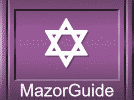

|
|||||||||||||||||||||
|
The Torah's
Weekly Portions
The first thing to consider in this Parshah is the name of the Sefer (Book) - Sh'mot. This has been mistranslated to Exodus. Although the exodus of the Israelites from Egypt forms a part of the Book, it is not the entire Book. What is Sh'mot? Does it fairly represent the entire Sefer? It certainly does. In Hebrew, the word shem means name. The plural of that word is sh'mot - names How does "names" represent the entire book better than the exodus? This is how the Parshah and the Sefer begin, "And these are the names of the Children of Israel who were come to Egypt . . ." Throughout the entire Sefer, the children of Jacob/Israel will be looked at again and again - who came to Mitzrayim (Egypt), who left, and which people arrived at Har Sinai (Mount Sinai). They are described through their names and their tribes or families. The Sefer Sh'mot is a book about people and some very important events in their lives and in ours. Previously, I stated that this Parshah provides insight into our sages and their understanding of Torah. This week's lesson is going to concentrate on four sentences – perek Gimel, pasuk yud-daled (3:14) through perek Gimel, pasuk tet-vav (3:15). As an aside, a person who is not versed in Hebrew nomenclature might wonder why 14 is yud-daled (yud representing ten, daled being four), and 15 uses tet (nine) and vav (six). It is because using the yud (ten) and hay (five) combination would produce part of the name of Hashem and is thus avoided. To begin Moshe Rabbeinu (our Rabbi Moses) is having a conversation with Hashem after approaching the burning bush on the slope of Har Sinai. Hashem has just told Moshe Rabbeinu that he is to take the Children of Israel out of Mitzrayim. For those who are familiar with the story, Moshe was recalcitrant about the idea, to say the least. He kept explaining to Hashem why he wouldn't be suitable for such a task. And Hashem countered each of his arguments. Resigned, Moshe Rabbeinu asks Hashem what he should tell the Children of Israel when they ask who it is that has sent him. We pick up with Hashem's answer.
There are two things we are going to concentrate on here. The first is the Name that Hashem gives. The second is that Hashem only says "I Shall Be" in the second sentence where He says, "I Shall Be has sent me to you." The common mistranslation is that Hashem says His Name is "I Am That I Am." The Hebrew phrase is eh-heh-yeh asher eh-heh-yeh. Eh-heh-yeh is I Shall Be not I Am. Asher is that or as. And eh-heh-yeh is repeated. A person might ask what is the difference? I Shall Be indicates that this Name is eternal into the future not existing just in that moment. In fact, later in this section, Hashem says, "This is My Name forever . . . from generation to generation." This is an early example of Hashem's statement that He is forever - in the present and in the future. More important, it indicates that His relationship with us, the descendents of Israel, is forever. Rashi explains that the import of the word eh-heh-yeh - I Shall Be - is as follows, "I shall be with them in this sorrow as I shall be with them in other sorrows." According to the Midrash, Moshe responds with "An evil in its own time is enough." In other words, Moshe is saying isn't it enough that we must suffer now in Mitrayim, is there a need to tell the people that there will be future sufferings as great? Rashi explains that this is the reason that G-d says, "I Shall Be has sent me to you," rather than repeating the I Shall Be as He did at first. In other words, to protect the Children of Israel from knowledge of additional pain and suffering in the future, Hashem chooses to say "I Shall Be has sent you," rather than "I Shall Be As I Shall Be has sent you." Previously I stated, and it bears mentioning again, that the Midrash is the Book of Legends. At the same time, although it does not have the force of Torah, the balance of the Tanakh, or the Talmud, it provides some unique insights. The idea here is to provide an insight into the thinking of our sages when they considered the Torah. Let's back up for just one second. Think about how many different ways the words "I Shall Be As I Shall Be" can be interpreted. This could be a statement of singularity if a person were to say, "It is my choice as I shall be." Or, it could be taken as a nearly indifferent statement, "This is what I am and what I will be - fate." With Hashem, however, we know that a statement is nothing less than a declaration of force and power, "I Shall Be Eternal, I Shall Be with You at all times." This goes beyond a mere statement or minor declaration. It is a promise made by Hashem to the Children of Israel. In this time, in this place, I am with you. In all times, in all places, I will be with you.
________
Back to
Torah Portions Archive
|
|
|||||||||||||||||||
|
|||||||||||||||||||||













